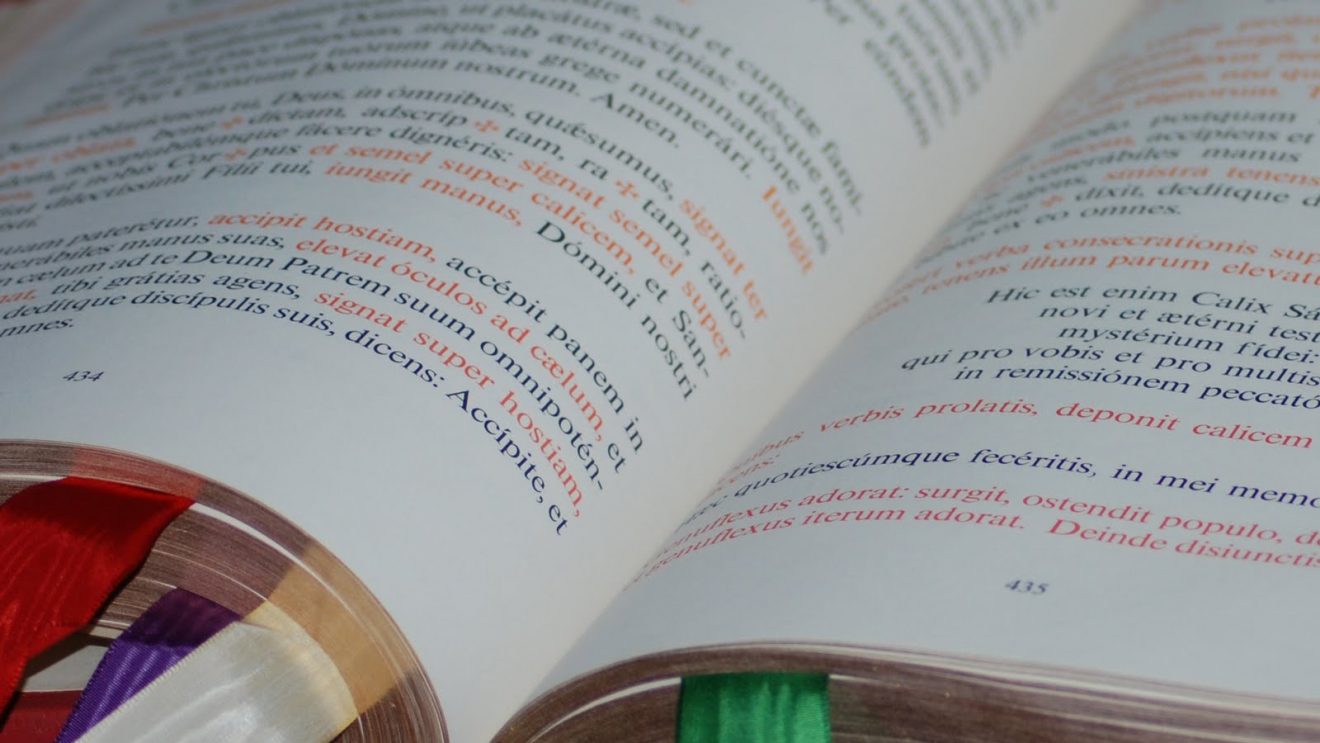Most people’s reaction to an incoming missile is to seek shelter, a safe place to hide. The reaction is not much different from some people’s response to the new English translation of the Latin Roman Missal. Change is never easy, and Catholics have become comfortable with the English that we have been using at Mass for the last forty years. The prayers are easily understood; the responses are in comfortable colloquial language.
Why, then, was there any reason to change, to cause confusion, to spend significant money on new liturgical books, hymnals, pew cards and musical Mass settings?
REASON FOR THE CHANGES
The Church has undertaken this enormous task for numerous reasons. One reason is the significant amount of new material to be added to the Missal. Because Blessed John Paul II canonized many saints, new Mass texts are required for their feasts. The new Missal includes additional prefaces for the Eucharistic Prayers. The Missal includes additional Masses for various needs and occasions. There is also a new General Instruction, giving the theology of, and directions for, proper celebration of the Mass. This constitutes a significant increase in the content of the new Missal.
Also, in the 2001 document, Liturgiam Authenticam (authentic liturgy), the Church mandated a more precise method of translating liturgical texts. Translating the texts in a more literal way–as opposed to the previous method of “dynamic equivalence”–will bring us into closer unity with Catholics around the world who will be praying in similar words in their own languages. The new more formal translation is not meant to be slavish word-for-word translation, but is meant to preserve the theological tradition of the Church more strongly. One of the great strengths of the new translation is that it very clearly connects us with the Bible texts that underlie the prayers of the Mass.
IMPLEMENTATION AND RESOURCES
One of the criticisms of the liturgical renewal following the Second Vatican Council was that people were not prepared sufficiently. They arrived at church one Sunday and the altar was turned around. On another Sunday, the Mass was in English. On another Sunday, a lay person was reading the scriptures. These changes were monumental for people used to the traditional Latin Mass. In some places, people were prepared with proper catechesis, but, in other places, the changes were simply made and the people had to accept them without understanding the reasons.
Two of the most significant resources are Believe, Celebrate, Live the Eucharist: A Program for Study and Reflection published by World Library Publications. It is a five week program exploring five different elements of the Mass: the Gathering, Liturgy of the Word, Giving Thanks, Communion and Sending. Become One Body, One Spirit in Christ, published by the United States Catholic Conference of Bishops, is a more specific resource. It is an interactive DVD that explores the layers of meaning in the texts of the Roman Missal.
TOWARD A DEEPER UNDERSTANDING
The classic Church maxim, Lex Orandi, lex Credendi–commonly translated “The law of prayer is the law of belief”–indicates the intimate connection between the way we pray at worship and what we believe. Anyone who has read a book before seeing a movie is invariably disappointed in the movie. Things are eliminated or truncated, and some elements are even changed.
Translations can be like that. Because the new translation is closer to the original Latin, the theology of the texts we pray will surely affect our faith. Even simple text changes like “And with your spirit,” point to a deeper understanding of faith acknowledging the presence of the Holy Spirit in the priest (or deacon- at the proclamation of the Gospel) in a unique way as a result of his ordination. These words also reflect the biblical language of St. Paul in Galatians 6:18; Philippians 4:23 and Timothy 4:22. As we pray these new texts the biblical language will take on greater clarity as we hear the words proclaimed in the Scriptures at Mass.
The Creed is now a more powerful expression of personal faith as we repeat the words “I believe” four times as we recite them together. The Gloria becomes more powerful as we amplify our praise in “We praise you, we bless you, we adore you, we glorify you, we give you thanks for your great glory.” The use of unusual words like consubstantial and incarnate might cause us to think and ponder these great theological dogmas or provide the homilist material for preaching.
To show more powerfully that the Mass is not self-contained, the Holy Father encouraged the inclusion of alternate dismissals. For example, “Go and announce the Gospel of the Lord” or “Go in peace, glorifying the Lord by your life” clearly indicate how we are to embody our mission in the world.
Although there is no reason to hide from the new Roman Missal, be prepared for an explosion of poetry, theology, biblical imagery and song. Despite the challenges, this new translation will help us to be faithful to our tradition and to dive more deeply into the Mystery that we celebrate.
Mr. McAfee is Director of the Office for Christian Worship for the Archdiocese of Detroit. He is a graduate of the University of Notre Dame.








